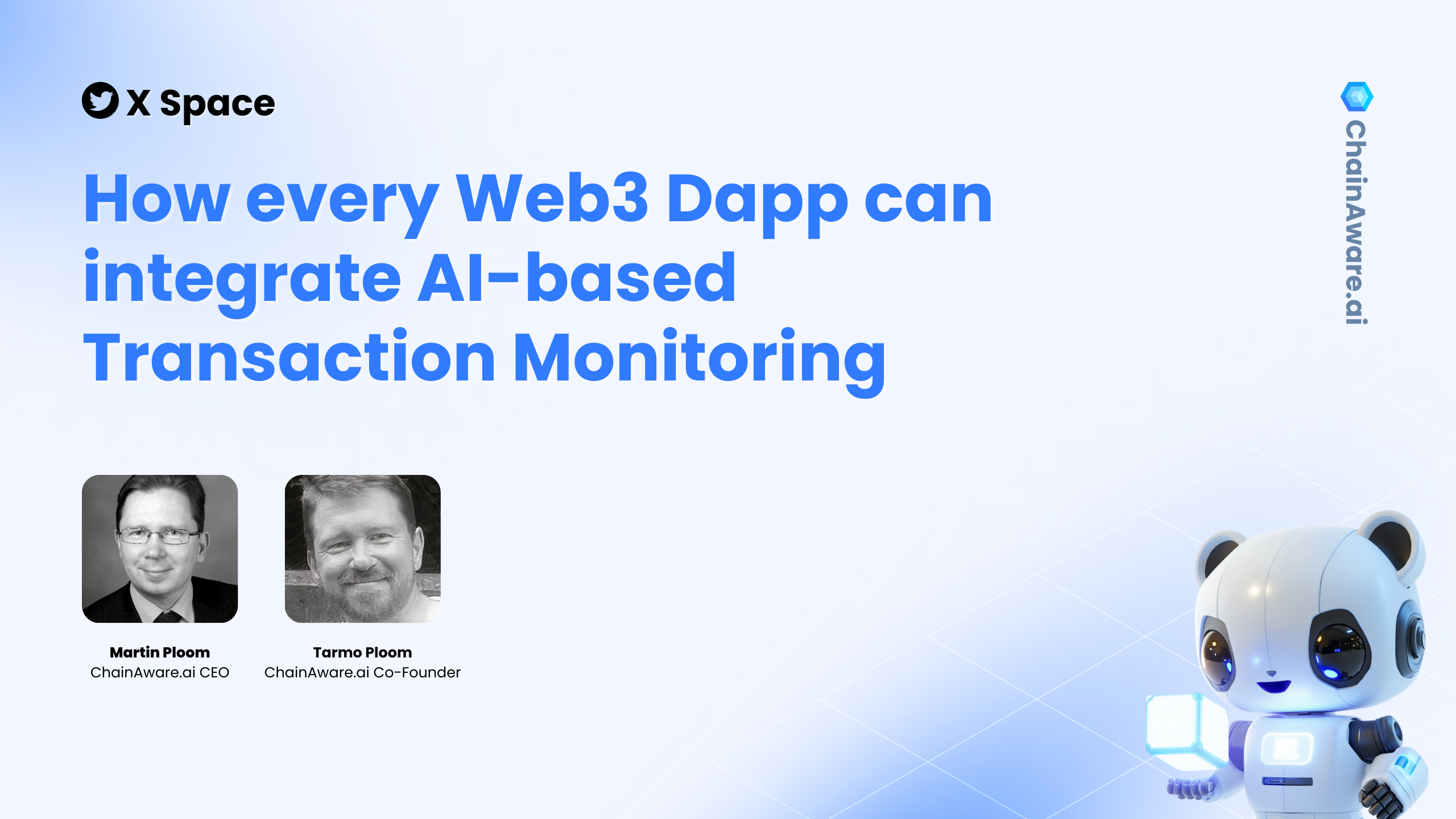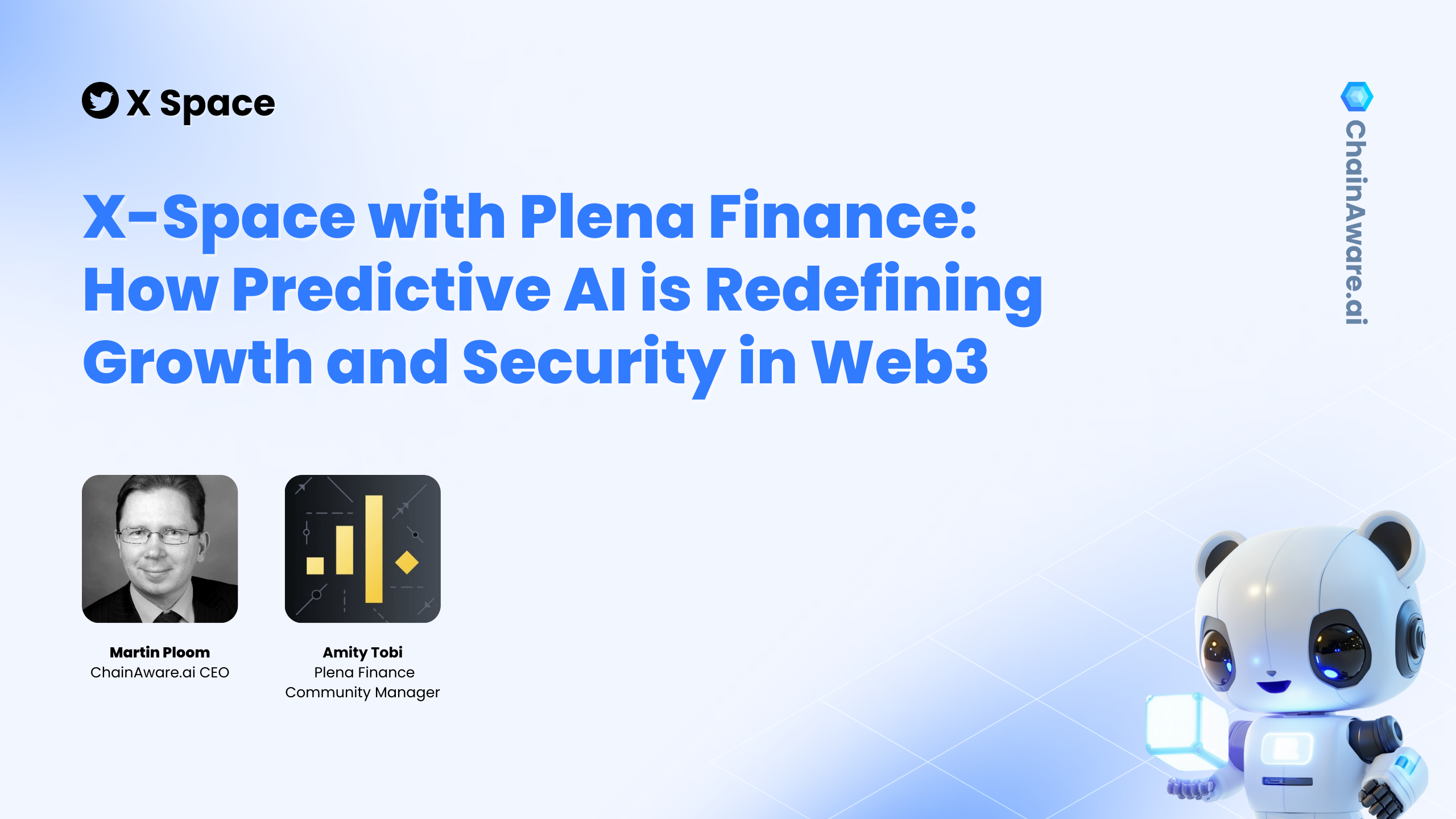Web3 is often compared to the early days of Web2, an era marked by high fraud rates, uncertainty, and a lack of structure for connecting legitimate users and businesses. Much like how predictive fraud detection and efficient ad tech paved the way for the mass adoption of Web2, the same combination of technologies can catalyze Web3’s growth.
At ChainAware, our mission is to make Web3 safer and more accessible by offering next-generation, AI-driven solutions that predict and prevent fraudulent behaviors before they strike.
Below is a roadmap focused on individual users. We discuss the significance of predictive fraud detection, why conventional anti-money laundering (AML) and static blockchain analytics fall short, and how new tools—free to individual users—can help clean up the Web3 ecosystem.
Listen to the full X-Space talk here: https://x.com/ChainAware/status/1885728131341787493
Why Web3 Needs Predictive Fraud Detection
In the early days of Web2, online credit card fraud was rampant. Many people were reluctant to conduct e-commerce transactions because their credit card information could be stolen. Payment processors introduced predictive transaction monitoring, which analyzed purchasing patterns in real time to flag suspicious activity. This technology drastically reduced fraud, boosting user confidence and driving exponential growth.
In today’s Web3 landscape, a similar issue exists. Users are afraid to transact on decentralized applications due to frequent reports of hacks, rug pulls, and impersonation scams. ChainAware addresses this challenge by applying advanced AI-based behavior analytics, which is a direct parallel to what Web2 pioneered with credit card fraud detection.
The Limitations of Documentation-Only Systems
Many existing systems merely document fraudulent addresses and activities after the fact. In Web3, irreversible transactions mean that once funds are moved, there is no recourse. Documentation helps with post-incident reporting but does little to prevent the incident in the first place. A predictive approach is essential for tackling fraud dynamically, matching the sophistication of scam networks.
ChainAware’s Free Tools for Individuals
We have released several key features designed for individual users to protect themselves and the broader community—at no cost.
1. AI-Based Fraud Detector
Our AI Fraud Detector is trained on vast amounts of on-chain data. When users input any wallet address, they receive an instant analysis indicating the likelihood of future fraudulent activity. This prediction is derived from behavioral patterns observed in both legitimate and known bad addresses. With approximately 98 percent accuracy, this tool empowers users to quickly assess trustworthiness before transacting.
How it Works
- User enters a wallet address.
- System reads the complete transaction history and blockchain interactions.
- A real-time AI model analyzes behavioral patterns and returns a prediction on whether the wallet is likely to engage in fraudulent activity.
Because the model relies solely on on-chain data and is self-learning, it adapts to new scam tactics, making it a dynamic and powerful deterrent.
2. AI-Based Rug Pull Detector
Rug pulls occur when liquidity is suddenly drained from a newly created token or pool, leaving investors with worthless assets. Our Rug Pull Detector focuses on smart contracts instead of individual addresses. It identifies suspicious behaviors—such as unusual liquidity or token movements—that correlate with future rug pulls.
Key Benefit: Reduces the risk of losing 100 percent of an investment by signaling potential rug pulls before they happen.
3. Wallet Auditor and “Share My Wallet Audit”
The Wallet Auditor provides detailed profiles of any wallet’s on-chain behavior, highlighting risk tolerance, experience level, and transaction history. Users can generate a unique link—known as “Share My Wallet Audit”—and prove ownership of a specific wallet by signing a transaction. This feature is valuable for:
- Peer-to-peer deals and collaborations
- Freelancing or service agreements
- Vetting partners in NFT or DeFi marketplaces
By sharing your wallet audit, you allow others to verify that you are the wallet’s owner and are trustworthy.
4. AI Credit Score
Our AI Credit Score adapts traditional finance credit-scoring methods for Web3. While still emerging in DeFi adoption, it can become vital as on-chain lending matures. The score is computed entirely from blockchain behavior, creating a transparent measure of one’s financial reliability in a decentralized setting.
5. Telegram and Discord Bots
To make fraud detection accessible wherever Web3 conversations happen, we offer Telegram and Discord bots. These bots enable quick lookups of wallet addresses and contracts without leaving your chat environment. A dedicated Telegram Mini App with a graphical interface further streamlines this process.
Vision and Roadmap for Individuals
- Expand Chain Coverage: We currently cover Ethereum, BNB Smart Chain, Polygon, and TON. Additional chains, such as Base, are on the way.
- Pre-Calculations for Higher Accuracy: We will leverage our partnership with Google’s Startup Program to increase computing power for more accurate, near-real-time predictions, aiming for 99 percent accuracy or higher.
- Predictive Timing: Ongoing research will allow us to forecast not just “if” but “when” suspicious addresses might engage in fraudulent activities.
Why Free?
Offering these tools free to individuals encourages widespread adoption. The more users who check wallet addresses, the fewer opportunities malicious actors have to operate in the shadows. This decentralized verification process lifts overall trust in Web3, enabling the entire ecosystem to thrive.
Conclusion
ChainAware is committed to driving Web3 toward safer and more sustainable growth. By tapping into AI-based predictive fraud detection and making these solutions accessible to individual users at no cost, we help improve trust across all blockchain-based platforms. Web3 no longer needs to be a high-risk environment. With more robust security in place, both new and experienced users can explore, invest, and innovate on decentralized platforms with greater confidence.
We look forward to continuing this conversation and, in future articles, delving into how businesses can implement similar AI-driven tools to enhance user acquisition, reduce compliance risks, and grow sustainably.







